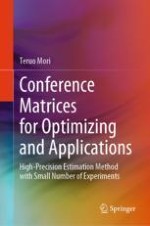2024 | OriginalPaper | Buchkapitel
14. Optimization Comparison Between Conference Matrices and Current Method with Temperature Control System
verfasst von : Teruo Mori
Erschienen in: Conference Matrices for Optimizing and Applications
Verlag: Springer Nature Singapore
Aktivieren Sie unsere intelligente Suche, um passende Fachinhalte oder Patente zu finden.
Wählen Sie Textabschnitte aus um mit Künstlicher Intelligenz passenden Patente zu finden. powered by
Markieren Sie Textabschnitte, um KI-gestützt weitere passende Inhalte zu finden. powered by
